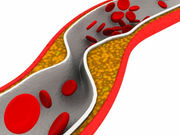Improvement in all-cause mortality tied to angiography, PCI, and CABG procedures
TUESDAY, Aug. 30, 2016 (HealthDay News) — Survivors of myocardial infarction live longer now than they did before, mainly due to procedures such as coronary angiography, percutaneous coronary intervention, and coronary artery bypass graft surgery, according to a study published online Aug. 30 in the Journal of the American Medical Association. The research was published to coincide with the annual European Society of Cardiology Congress, held from Aug. 27 to 31 in Rome.
Chris P. Gale, M.D., Ph.D., associate professor and consultant cardiologist at the University of Leeds in the United Kingdom, and colleagues tracked information from a 2003 to 2013 database on 389,057 non-ST-elevation myocardial infarction (NSTEMI) patients living in England and Wales (median age, 72.7 years). Specifically, the researchers looked at the treatments these patients received and compared that to their survival in the six months after NSTEMI.
The team found that the six-month survival rate of British NSTEMI patients improved by about 3.2 percent, year by year, throughout the study period. These gradual improvements were almost entirely due to the “increased and more widespread use of the invasive coronary strategy” — more angioplasties, stents, and bypass procedures, Gale told HealthDay.
“Among patients hospitalized with NSTEMI in England and Wales, improvements in all-cause mortality were observed between 2003 and 2013,” the authors write. “This was significantly associated with use of an invasive coronary strategy and not entirely related to a decline in baseline clinical risk or increased use of pharmacological therapies.”
Several authors disclosed financial ties to the pharmaceutical industry.
Copyright © 2016 HealthDay. All rights reserved.








